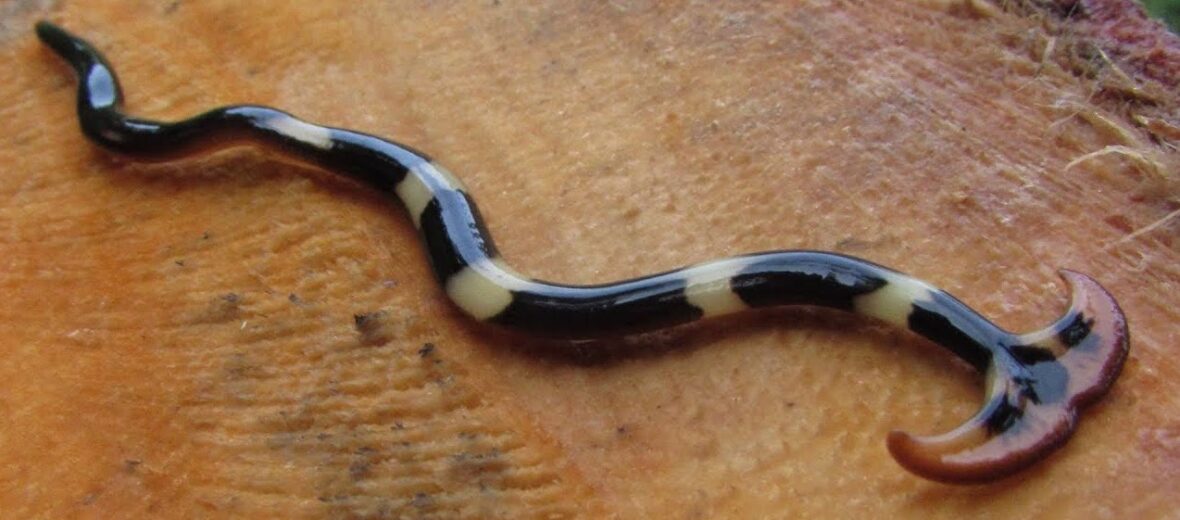
The hammerhead worm is a force to be reckoned with. They’re hunters, they’re highly toxic, and they’re coming for an earthworm near you! There are 160 known species of hammerhead worms, to date. Each as fierce as the next. They can be found throughout the world, sans Antarctica, and are an invasive species in all locales, except in their native southeast Asia. These planarians prefer cool, moist habitats. Due to their widespread, global population and invasive nature these worms are not evaluated by the IUCN. This article is on special request by my friend Eleanor.
First the Stats…
Scientific name: Bipalium
Length: Up to 19.68 inches
Lifespan: Potentially immortal
Now on to the Facts!
1.) They also go by the common names of Broadhead planarian and landchovy.
2.) These planarians hunt earthworms, slugs, insect larvae, and are even known to cannibalize each other.
3.) The hammerhead worms come in a variety of earthen colors, like: brown, gold, gray, and green.
4.) Utilizing chemoreceptors located under the head, these critters locate their prey.
5.) Once a prey item is detected, the hammerhead will entangle it in sticky secretions. Once immobilized, the predator will extend its pharynx and sort of vomit digestive juices onto the prey. Then the hammerhead worm will simply drink the liquefied flesh and guts.
But wait, there’s more on the hammerhead worm!
6.) If food is scarce, these worms will even eat themselves!
7.) In a curious method of mobility, these worms have even been seen lowering themselves down from on high, on a long string of mucous.
Did you know…?
Hammmerhead worms are the first recorded land invertebrate to possess tetrodotoxin. A potent and lethal neurotoxin typically found in some species of poison frogs.
8.) They are hermaphrodites (possess both male and female sexual organs).
9.) These worms reproduce by exchanging gametes with another worm, via secretions. The egg capsules of the recipient are shed and hatch in up to 3 weeks.
10.) Hammerhead worms can also reproduce asexually.
But wait, there’s still more on the hammerhead worm!
11.) If cut into pieces, each segment will regrow into a new worm. Essentially rendering them immortal.
12.) Their invasive nature comes into play in that they prey on earthworms. Earthworms are beneficial to soil health and plant growth.
Now a Short Hammerhead Worm Video!
Be sure to share & comment below! Also, check out the Critter Science YouTube channel. Videos added frequently!
Want to suggest a critter for me to write about? Let me know here.



